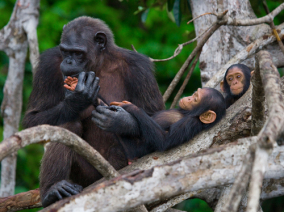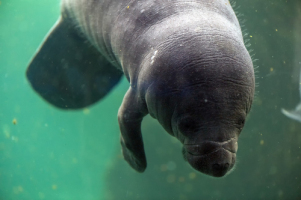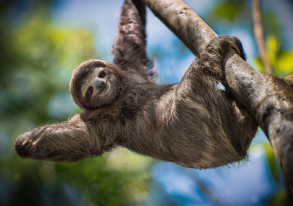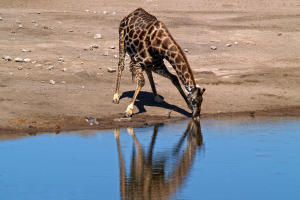By: C.A. Victor
Animals come in all shapes and sizes. Exploring their world can be a fun, if often challenging, experience. Exploring the world of mammals can be just that, especially as you begin to break down the types of mammals and what characteristics separate them as well as the ones they share. In this article, we’ll be breaking down the specifics of a group you probably know better than you think you do – placental mammals.

What is a Mammal?
While we’ve tackled this topic previously, let’s take a moment to talk about mammals compared to other types of animals. Mammals are a type of warm-blooded animal that nourishes their young with milk produced from the mother’s mammary glands. They are one of the five vertebrate classes (animals with a backbone): amphibians, birds, fish, mammals, and reptiles. The mammals are classified under kingdom– Animalia, phylum – Chordata, and class – Mammalia.
If you’d like more information on the classification of mammals, please visit our article – “What is a Mammal?” – for a more in-depth look at their characteristics and traits.
How are Placental Mammals Different From Other Types of Mammals?
There are three types of mammals: placental, monotremes, and marsupials. While each shares the fundamental traits of a mammal (including bearing live young and possessing mammary glands), they also differ based on easily identifiable traits.
Placental mammals are also therian mammals. That means that in addition to having ovaries and eggs (which all mammals have), therian mammals also have additional reproductive structures: a uterus and vagina. These two structures set placental mammals and marsupials apart from monotremes.
However, the most substantial difference between placental mammals and the other types is in the name itself. Placental mammal mothers carry their fetuses within their uterus where it is nourished via the placenta until birth. The placenta is a temporary fetal organ that attaches to the fetus via an umbilical cord and facilitates the exchange of nutrients, gas, and waste between the fetus and mother. While marsupials also nourish young in a placenta, it is for a much shorter period and is then followed by the very undeveloped young being nourished inside the mother’s pouch.
Here are the additional anatomical traits all placental mammals share:
- Placental mammals have a wide opening at the bottom of the pelvis to allow the live birth of a baby relatively large compared to the size of the mother. In most mammals, sexual dimorphism – a difference in the size or appearance of animals in the same species based on sex other than sexual organs – presents as a wider pelvic opening in females compared to males of the species.
- Placental mammals do not have epipubic bones. These are paired bones projecting forward from the pelvic bone. They are found in most modern monotremes and marsupials in the Mammalia class and, though there are many theories as to why they still have them, their original purpose is unknown. Their absence in placental mammals allows for the abdomen to expand more fully during pregnancy.
- The bones of the foot fit into a socket formed at the end of the tibia and fibula (the lower long bones in the legs/lower limbs of animals) to create a complete mortise and tenon joint.
- The presence of a malleolus – that’s the boney protrusion that creates your inner ankle – at the bottom of the fibula (one of the lower leg bones).

What are Some Examples of Placental Mammals?
Placental mammals are the most diverse group of mammals with over 4000 known species (and undoubtedly more left to discover!) Animals as small as mice and as large as whales fall into the category, showing just how different placental mammals can look from one another.
The best-known placental mammal is the human. That’s right! We are a member of this group and share all these traits with many of the other, most common species.
What are the Orders of Placental Mammals?
The earliest way of classifying placental mammals divides them into 17 orders. These help scientists categorize these animals based on one or several sample traits that they share and the function of those
traits.


Fun Placental Mammal Trivia!
- Placental mammals make up the largest and most diverse group of mammals.
- There are more rodents and bats than other types of placental mammals.
- Placental mammals give birth to larger and more mature fetuses compared to other types
- Longer gestation periods (because the fetus is nourished by the placenta) mean that the offspring are given a longer period of growth and development in the uterus. Because of this, placental mammal offspring have a greater chance of survival.
- Another word for placental mammals is Eutherians.
